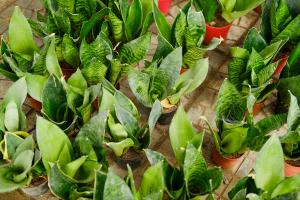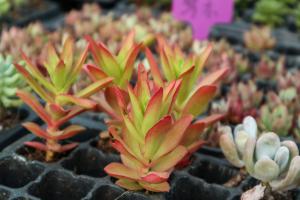Is a Money Tree Plant Safe for Chameleons?
Chameleons are fascinating creatures that require specific care to thrive in captivity. One of the most crucial aspects of chameleon care is providing a suitable habitat. This includes the right temperature, humidity, and lighting conditions, as well as appropriate decor and plants. If you're considering adding a Money Tree plant to your chameleon's enclosure, you may be wondering whether it's safe for them to consume. In this article, we'll explore whether a Money Tree plant is safe for chameleons and how it fits into their diet.
Understanding the Chameleon Diet
Before we delve into whether a Money Tree plant is safe for chameleons, it's essential to understand their diet. Chameleons are insectivores, which means they primarily eat insects such as crickets, mealworms, and roaches. In the wild, they also feed on other invertebrates such as spiders, snails, and caterpillars. Additionally, they may consume small amounts of fruits and leaves from select plants.
In captivity, it's best to offer your chameleon a varied, balanced diet of gut-loaded insects, calcium supplements, and occasional plant matter. Most of their nutrition should come from insects.
The Money Tree Plant
The Money Tree plant, also known as Pachira aquatica, is a popular choice for indoor house plants. It belongs to the family Malvaceae and is native to Central America. Money Trees have a unique braided trunk and can grow up to 60 feet tall in the wild.
The leaves of a Money Tree plant are not toxic to chameleons. However, this plant is not a typical part of a chameleon's diet, so it should be used sparingly as an occasional snack. If your chameleon ingests too many leaves, they may experience digestive upset, similar to humans consuming too much fiber. Furthermore, some cultivars of Money Trees may have been grown with pesticides or other chemicals that could be harmful to your chameleon.
Alternatives to Money Tree Plants
While a Money Tree plant may not be the best choice for frequent feeding, some other plants are beneficial for a chameleon's enclosure. Live plants provide a natural habitat for your chameleon, promote humidity, and can act as natural air purifiers.
Chameleons may occasionally nibble on leaves, so it's crucial to choose plants that are safe for them. Some examples of safe plants for chameleons include:
Ficus benjamina
Hibiscus
Pothos
Bromeliads
Schefflera
Always choose organic plants, free from pesticides or other chemicals, and research the care requirements for each plant before adding it to your chameleon's habitat.
Conclusion
While the leaves of a Money Tree plant are not harmful to chameleons, this plant should be reserved as an occasional snack. Insects should make up the majority of a chameleon's diet, with plant matter providing supplemental nutrition. If you choose to add live plants to your chameleon's enclosure, be sure to research their care requirements and only choose organic, pesticide-free plants. With proper nutrition and care, your chameleon can thrive in their environment.

 how many times do yo...
how many times do yo... how many planted tre...
how many planted tre... how many pine trees ...
how many pine trees ... how many pecan trees...
how many pecan trees... how many plants comp...
how many plants comp... how many plants can ...
how many plants can ... how many plants and ...
how many plants and ... how many pepper plan...
how many pepper plan...






























